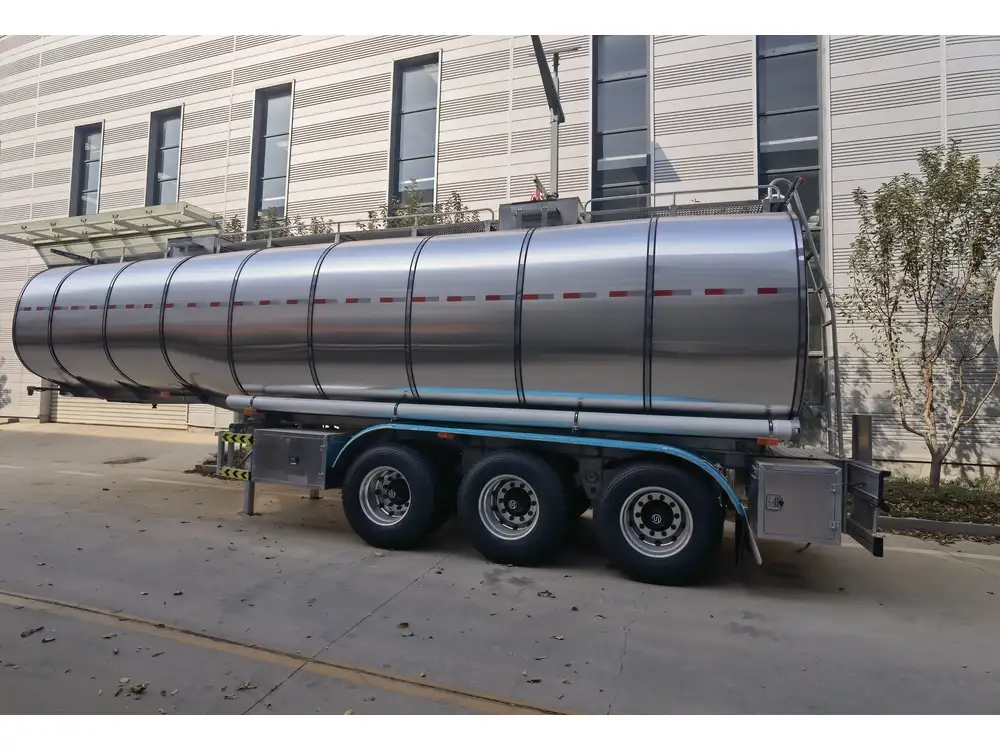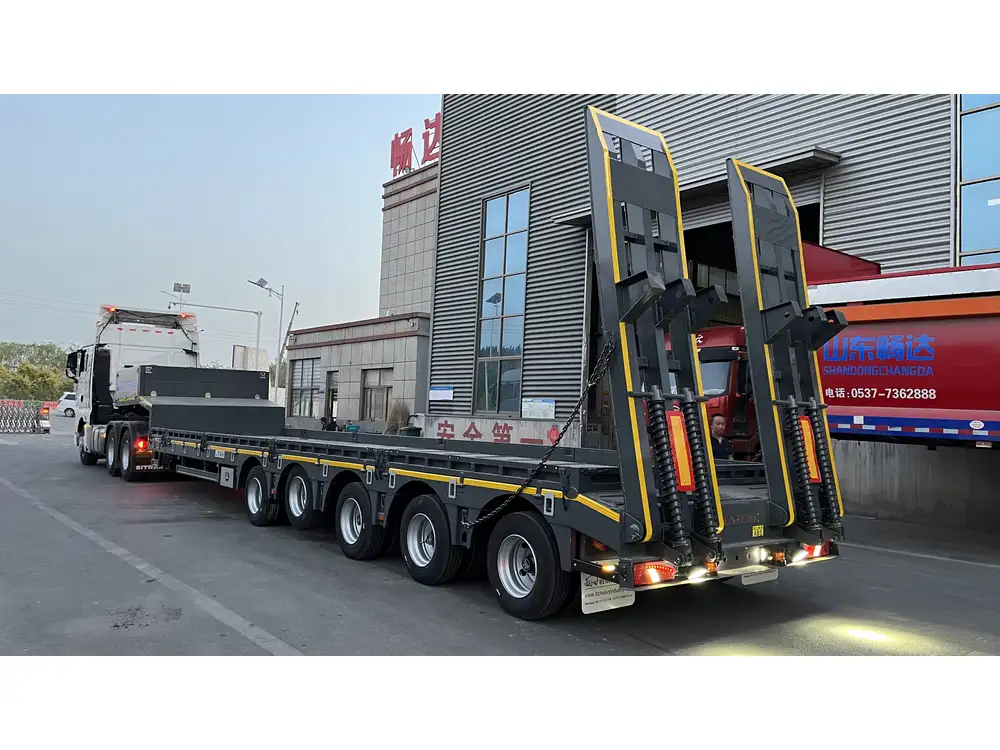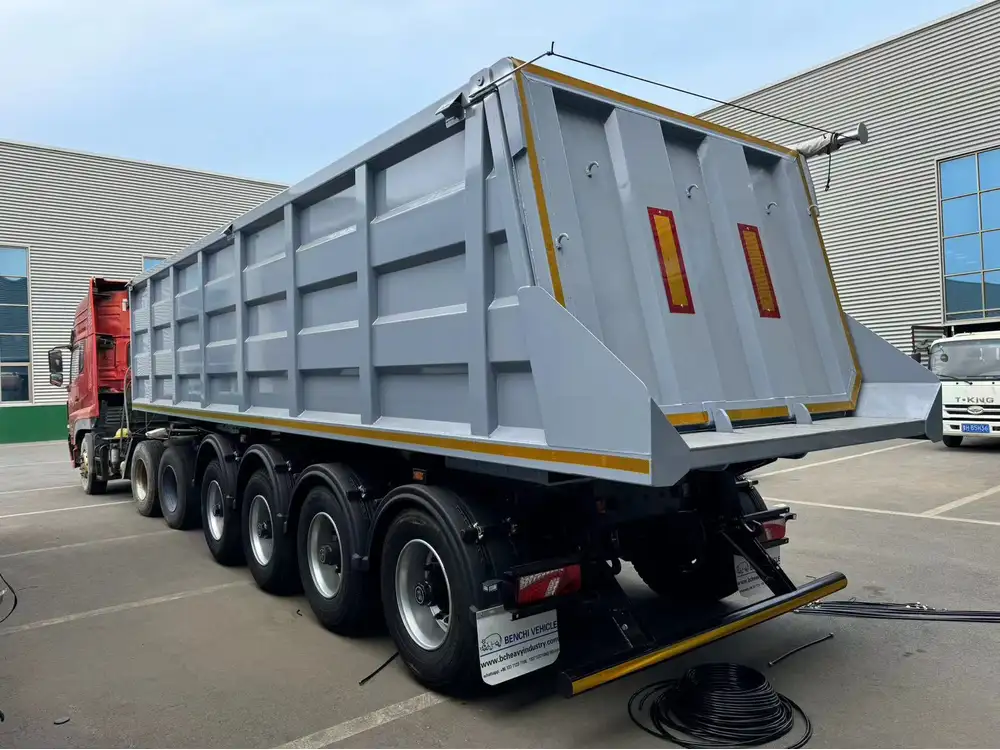When it comes to the transportation and delivery of gravel, choosing the right dump trailer is paramount. A well-suited dump trailer not only streamlines the loading and unloading process but also ensures efficiency and cost-effectiveness. This guide delves deep into various dump trailer options available on the market, analyzing their capabilities, features, and suitability for gravel delivery.
Understanding Dump Trailers: Types and Mechanisms
Dump trailers come in various designs, each having unique characteristics. When selecting the right dump trailer for gravel, it’s essential to understand these types and mechanisms.
1. Channel Frame Dump Trailers
Channel frame dump trailers are known for their robustness. The frame consists of C-channel beams, providing durability while keeping the weight manageable. This type is particularly well-suited for gravel because their strong construction allows for heavy loads without deforming or bending.
| Pros | Cons |
|---|---|
| Robust construction | Heavier than other types |
| High load capacity | May require more power to tow |

2. Tubular Frame Dump Trailers
These trailers feature a tubular frame design, offering a blend of weight-saving and rigidity. The rounded shape of the frame resists stress concentrations, making it suitable for consistent gravel hauling.
| Pros | Cons |
|---|---|
| Lighter weight | May have lower capacity |
| Efficient towing | Potentially less durable than channel frames |
3. Gooseneck Dump Trailers
The gooseneck design connects to a hitch that extends over the bed of a pickup truck or a larger towing vehicle. This connection allows for better weight distribution and stability when towing heavy materials like gravel.
| Pros | Cons |
|---|---|
| Superior stability | Requires a compatible tow vehicle |
| Larger payload capacity | More expensive |
4. Hydraulic Dump Trailers
These trailers utilize hydraulic systems to lift their beds, allowing for efficient unloading. They are particularly adept at releasing materials uniformly, which is vital for gravel deliveries.
| Pros | Cons |
|---|---|
| Effortless unloading | Higher maintenance costs |
| Control over unloading speed | Dependence on hydraulic systems |

Key Features to Consider When Choosing a Dump Trailer for Gravel
When choosing the best dump trailer for gravel transportation, certain features and specifications can markedly influence performance and efficiency.
1. Payload Capacity
The first and foremost aspect is payload capacity. A dump trailer’s load capacity expresses how much weight it can handle. For gravel, consider the density and weight: roughly 1.5 tons per cubic yard. Choose a trailer that accommodates your typical load requirements. For instance, a trailer with a capacity of 10,000 lbs can haul approximately 6-7 cubic yards of gravel.
2. Size and Dimensions
The dimensions of the dump trailer influence maneuverability. A longer trailer may provide more capacity, but it may be cumbersome in tight spaces. Conversely, a smaller trailer is easier to handle but carries less load. Analyze the typical jobs and working conditions to find the ideal dimensions.

3. Dump Angle and Unloading Mechanism
The dump angle is critical for efficient unloading of gravel. A steeper dump angle, usually around 45 degrees, allows for faster gravel discharge. Look for hydraulic systems that provide adjustable angles to improve versatility in different unloading scenarios.
4. Material and Build Quality
Durability is crucial when hauling rugged materials like gravel. Inspect the material type of the trailer. Steel frames are typically stronger than aluminum but weigh more. On the other hand, aluminum trailers offer greater rust resistance and lighter weights, which can be beneficial in certain applications.
5. Tire Type and Size
The tire type and size significantly affect a trailer’s towing capability on various terrains. Choose all-terrain tires or mud-terrain tires if you often traverse uneven grounds. Larger tires can handle heavier loads and provide better traction.

6. Braking System
A reliable braking system ensures safety, especially when hauling heavy loads. Check for electric brakes or surge brake options. Hydraulic disc brakes provide superior stopping power compared to traditional drum brakes.
Comparing Top Dump Trailers for Gravel Transportation
To aid in making an informed decision, we’ve compared three high-performance dump trailers known for their effective gravel dumping capabilities.
| Dump Trailer Model | Payload Capacity | Dump Angle | Towing Type | Material | Price Range |
|---|---|---|---|---|---|
| Model A | 10,000 lbs | 45 degrees | Gooseneck | Steel | $5,000 – $7,000 |
| Model B | 7,000 lbs | 30 degrees | Channel Frame | Aluminum | $4,000 – $6,000 |
| Model C | 12,000 lbs | 50 degrees | Hydraulic | High-Strength Steel | $6,500 – $9,000 |
Model Insights:
Model A: With its impressive payload capacity and maneuverability, it excels in commercial applications where quick unloads are essential.
Model B: This model is more affordable and lightweight, making it suitable for small businesses and individual contractors.
Model C: Notably high dump angles allow for optimal gravel discharge, making it an excellent choice for jobs requiring precision.

Optimal Usage Practices for Dump Trailers
Maximizing the efficiency of your dump trailer requires specific operational techniques. Here are some best practices:
1. Loading Techniques
Ensure that the loading process distributes weight evenly across the trailer. Uneven weight distribution can lead to reduced control and stability while towing, especially downhill.
2. Regular Maintenance and Inspections
Routine maintenance is essential for ensuring your dump trailer remains in prime condition. Regularly inspect the hydraulic system, brakes, and tires to avoid mishaps during gravel delivery. Check for wear and tear—and replace parts as necessary to ensure longevity.

3. Unload with Care
When unloading gravel, control the speed of the dump bed to ensure precise placement. This is particularly significant in construction settings where exact gravel placement can save time and enhance project quality.
Troubleshooting Common Issues with Dump Trailers
While dump trailers are robust, they can occasionally present issues. Here’s a helpful troubleshooting guide:
| Issue | Solution |
|---|---|
| Difficulty lifting the bed | Check hydraulic fluid levels; refill as needed. |
| Uneven unloading | Adjust dump angle or check for uneven loading. |
| Poor braking response | Inspect brake components; replace worn parts. |
| Tire issues | Check for proper inflation and tread wear; replace as needed. |
Conclusion: Choosing the Right Dump Trailer
Selecting the best dump trailer for gravel hauling hinges on understanding specific operational needs, features, and overall performance. By considering the aforementioned aspects such as payload capacity, frame design, and build quality, we can guide prospective buyers toward making informed decisions that cater to their requirements.
In essence, the perfect trailer combines strength, efficiency, and easy handling. So whether you opt for a robust gooseneck or a lightweight aluminum model, thorough assessments of these factors will not only lead to improved gravel delivery but also enhance overall productivity.



